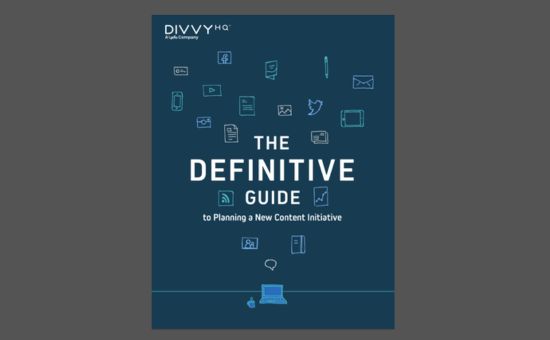The New TikTok Law: Preparing Your Social Strategy for What Comes Next | Wpromote
Social Media
Notes on a Possible TikTok Ban
TikTok has risen to social media superstardom, propelled by engaging user-generated content and a powerful algorithm that even challenges Meta’s dominance.
IS THE U.S. GOVERNMENT SERIOUSLY CONSIDERING BANNING TIKTOK?
The short answer: probably not. TikTok is deeply embedded in the cultural conversation, and both Congress and the White House are aware of how unpopular a ban would be. The concern isn’t TikTok itself but its Chinese parent company, ByteDance. Despite headlines about a potential ban, the real aim is to push ByteDance to divest TikTok within a year to allow it to continue operating in the U.S.
Even the threat of a ban is a reminder to marketers to continually assess their media mix to avoid over-reliance on specific platforms. Marketers should continue leveraging TikTok for brand and business growth. TikTok has pledged to challenge any new law in court, which could delay action significantly. However, it’s crucial to have contingency plans. This guide will help you evaluate TikTok’s role in your marketing strategy and future-proof your social media mix, ensuring you’re ready to pivot if necessary.
Preparation: Understanding Your TikTok Audience
TikTok often feels like it’s more by the people, for the people compared to other social networks. Its core is user-generated content, driving a shift toward more authentic, human-centric creativity across all advertising platforms. Even if a ban is unlikely, it’s crucial to understand who uses TikTok and what they gain from it. This understanding is key to evaluating which other platforms should be included in a diversified social media strategy.

The People’s Platform: TikTok’s Authentic Appeal
TikTok is undeniably entertaining. Its clever algorithm delivers an endless stream of content from countless niches, constantly refining the feed based on user preferences. It’s become a significant part of people’s daily routines, with the average user spending 56 minutes a day on the platform, according to eMarketer. This time spent is expected to grow in the coming years, assuming a ban doesn’t occur. TikTok is already outpacing YouTube in average daily watch time and is projected to nearly match Netflix in a few years.
While TikTok’s focus on entertainment might seem similar to TV, there are key differences.
The full-screen, sound-on experience of TikTok stands out because it doesn’t promote the passive, unfocused scrolling common on platforms like Instagram. With attention being a scarce resource, Kantar’s 2021 research for TikTok found that 46% of users engage with TikTok content without any distractions.
That’s right. Forget second screening: for many users, TikTok is the first social platform in a long time that acts as the only screen. And entertainment isn’t the sole reason people are using the app. TikTok sits at the intersection of similarities with other platforms.
Like YouTube, TikTok offers a creator-first experience, making it easy to transition from viewer to content producer. Like Reddit and Snapchat, it fosters niche communities with their own lexicons, references, and in-jokes. And, as one Google executive recently noted, many young people prefer using TikTok over Google to learn about products or services.
What truly sets TikTok apart from its competitors is its emphasis on discovery. The platform wasn’t built to show users content from people they already know with some new stuff on the side. TikTok’s algorithm is incredibly effective because it’s constantly surfacing new and surprisingly relevant content, delivering a unique experience every time you open the app.

Audience Analysis: Who’s on the Platform
Every marketing decision should begin with understanding your audience—how they consume media, their expectations from brands, and what motivates them to consider a brand in various media environments. Let’s explore who exactly is driving TikTok’s record usage.
A common assumption among marketers is that TikTok’s user base is predominantly young. While it’s true that the platform isn’t solely populated by trendy teens, the demographics are more diverse than you might expect.

According to Kepios, 18.7% of the global population aged 18 and up uses TikTok. The platform’s fastest-growing segments are within the coveted 18-34 age group, while those aged 45 and older comprise about 13% of the user base. Additionally, TikTok’s global user base is 54.1% female.
TikTok’s reach is extensive, available in over 150 markets and in more than 35 languages, including English, Spanish, French, German, and Portuguese. In the US alone, TikTok boasts over 150 million monthly active users. This means that a significant portion of your target audience is likely active and engaged on the app.

As the linear TV audience has fractured, shrunk, and aged, TikTok (alongside OTT) has become a significant contender for brand dollars, especially for those targeting hard-to-reach demographics like young people. Digitally, it ranks second only to Google for Gen Z adults seeking information on major news events.
TikTok users trust the platform to provide information, whether they’re casually scrolling and receptive to the algorithm’s suggestions or actively searching hashtags and trends for specific answers. This level of trust and engagement is incredibly valuable for brands of all kinds.

But that doesn’t mean they’re only on TikTok. In fact, Hootsuite’s 2023 social trends report found that a mere 0.1% of TikTok users exclusively use TikTok. The platforms with the most significant user overlaps are Facebook at 83.4%, Instagram at 81%, and YouTube at 77%.
This indicates there will still be ways to reach a significant portion of your current TikTok audience if a ban is enforced. Currently, your TikTok strategy is effective only if it aligns with the type of content your target audience finds compelling on the platform.
This approach shouldn’t change if you need to shift your efforts to other platforms. However, it’s crucial to identify how your business is leveraging TikTok to plan a path forward in the unlikely event the app becomes unavailable.

Ready to future-proof your TikTok strategy? Continue reading and download our comprehensive guide to navigate the evolving landscape and maximize your brand’s impact.
- Preparation: Understanding Your TikTok Audience
- The People’s Platform: TikTok’s Authentic Appeal
- Audience Analysis: Who’s on the Platform
- Evaluation: Assessing TikTok’s Strengths
- The Discovery Engine: TikTok’s Role in the Upper Funnel
- The Conversation Starter: Consideration on TikTok
- The Creator Connection: The Benefits of Partnership
- The Shift to Sales: TikTok Shop
- Convergence & Diversification: Building a Future-Proof Strategy
- The Right Mix: Diversifying Your Social Strategy
- The Big Opportunity: Embracing Media Convergence
- The Checklist: What to Do Right Now
Number of Pages:
- 22 pages
Pricing:
- Free






